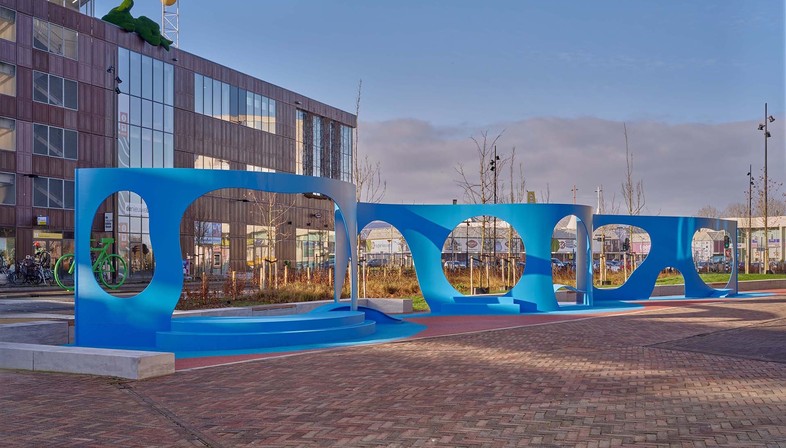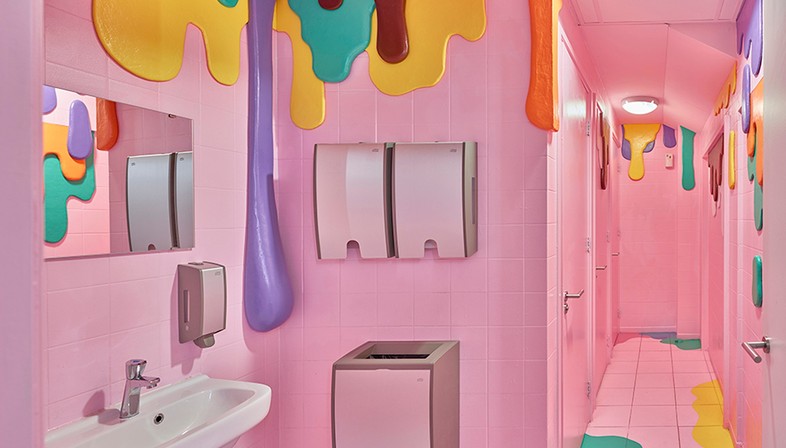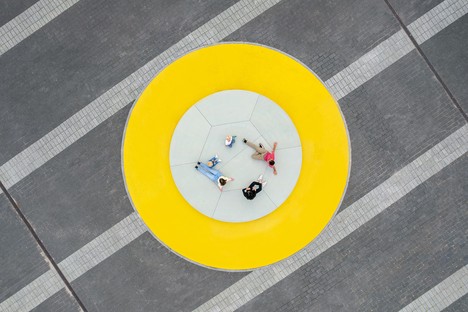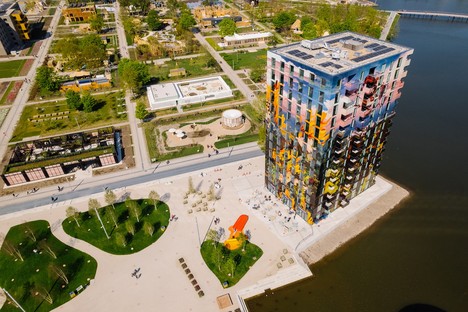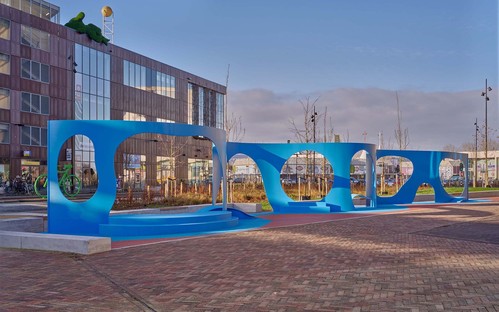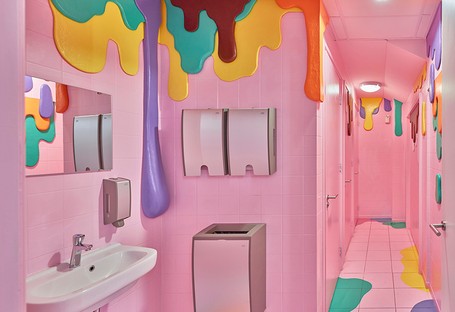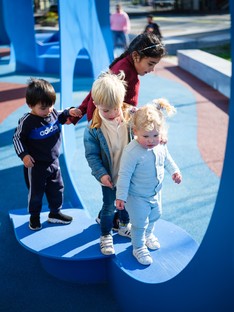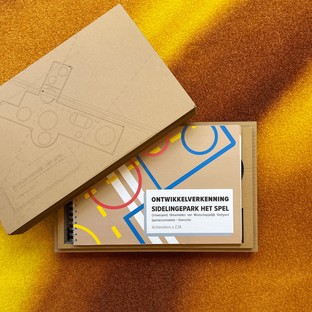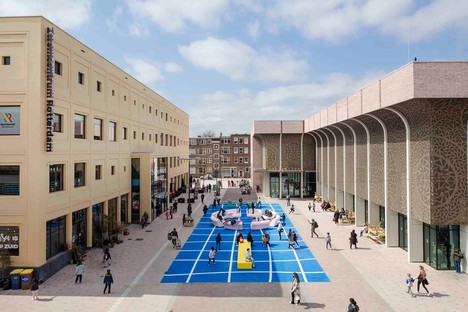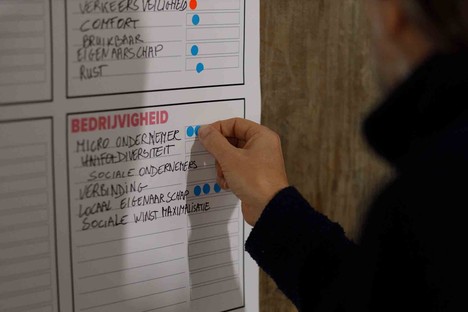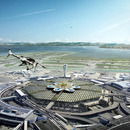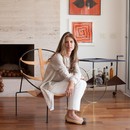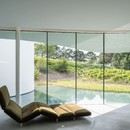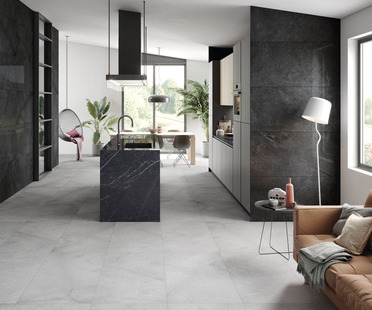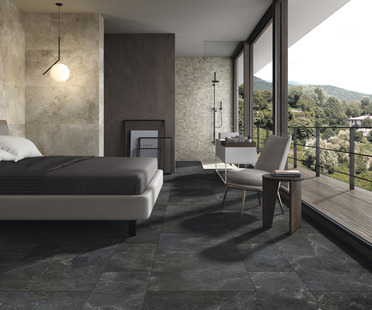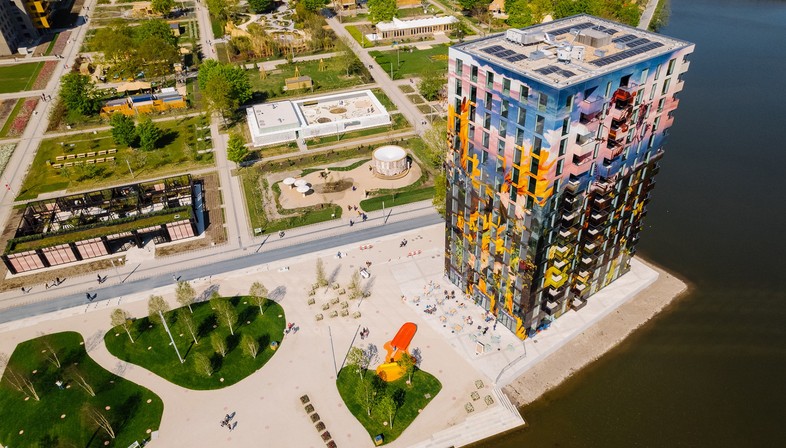
"At Arttenders, we believe that everyone deserves an inspiring built environment. As social designers, we put society at the centre of our process of design”. This is the motto welcoming visitors to the website of Arttenders, a young social design agency established in 2015 to come up with new financially sustainable cultural events. The studio’s founders, Faye Ellen and Siobhan Burger, have seen their little studio emerge and grow into an all-round agency involved in prestigious international projects.
I had an opportunity to talk to Siobhan Burger, who told me how, having adopted a perspective that puts society in the centre, the design process in all Arttenders’ work leads to a convergence of the challenges of the physical space and those involving interaction and the social sphere. Siobahn says: “From a playscape in Almere Buiten to a social gathering spot in Rotterdam Zuid. The common denominator? Projects are always designed in co-creation with residents, clients, and other stakeholders and aim to add local impact”.
Baltimore Bend (2021) by Arttenders x Studio Spass. A playscape designed for and with the neighbourhood through a strategic co-design process. Photo © Pim Top (l); Joep (r)
Beyond the strategic idea behind Arttenders, both the agency’s founders personally felt a need for more creative fun in urban development, an element that was missing, just like the connections between the artistic community and the public sphere. “We build our first urban interventions in collaboration with artists,” says the founder. “Soon they realized that their added value was not just the outcome, but the impact of a social design approach in complex matters”.
Arttenders’ very first project was for a group offering coworking spaces for innovative start-ups. The project theoretically involved wayfinding and interior finishes, designed to improve the quality of relationships in the offices. But Siobhan and Faye took it one step further: “We also convinced them to let us redo their bathroom spaces. We promised them that if they gave us full agency, we promised them that they would become a highlight in their tour and would help them increase sales. It resulted in WC Wonderland, designed in collaboration with Studio Maky and has indeed become one of the most photographed spots of the entire office”.
WC Wonderland, Happy Drips and Stains (2015) by Arttenders x Studio Maky. Photo © Pim Top.
Arttenders has no problem claiming room to act, investing a lot of energy and a certain amount of stubbornness in convincing clients to let them go to work. “Internally we often joke that we invite ourselves by knocking on the front door and by a lack of answer we will come storming through the backdoor anyway. All our projects involve a long lobby or acquisition procedure. However, the eventual impact is worth this investment!”
One very important question for anyone interfacing with the creation of spaces, whether indoors or outdoors, is the project’s approach to sustainability. The answers are often banal, but not in this case: “Nowadays the inclusion of environmental sustainability has become a given in the tender procedure in all areas of urban planning. There is a lot of interest in innovation of the physical environment, and it is relatively easy to include performance indicators to the proposed outcome. However, communities also need to be socially sustainable. Since it is hard to quantify the impact and results in this field, both economically and socially, it unfortunately is still undervalued in the process and perceived as a nice to have instead of a must. With our agency we are trying to address this issue and to create awareness and ownership of the urgency of the inclusion of social sustainability”.
At the end of the interview, Siobhan Burger told me how, in projects involving more than one player, Arttenders is always the weirdest and most eccentric. It always takes some time for clients and partners to realise that what Arttenders does is not just intermediation in pseudo-artistic projects, but an essential strategic weaving together of approaches to issues of social sustainability. “We have developed various tools to use co-creation to have a constructive conversation with all parties involved and to give inhabitants agency in the design process of their own environment. In a way, we are trying to make urban development more democratic, and to enrich it with a social component without reducing the spatial quality of the outcome”.
Francesco Cibati
www.arttenders.com
images credits:
01 - Turntable (2021) by Arttenders x Jonas Vorwerk, an interactive meeting point commissioned by Ahoy Rotterdam. It serves as an object for play, light installation, and spatial beacon. Photo © Joep.
02 - Sympoiesis (2022) by MVRDV, Arttenders and Alex Verhaest located in Almere Hortus. Photo © Joep
03 + 05 - Baltimore Bend (2021) by Arttenders x Studio Spass. A playscape designed for and with the neighbourhood through a strategic co-design process. Photo © Pim Top (l); Joep (r)
04 - WC Wonderland, Happy Drips and Stains (2015) by Arttenders x Studio Maky. Photo © Pim Top.
06 - The Splash, an urban intervention designed by Arttenders and Cindy Bakker. Photo: Lars van den Brink
07 - A snapshot of Sidelingepark Het Spel (2022), developed in collaboration with ZJA for Municipality of Rotterdam 08 - Photo © Rutger Burger










